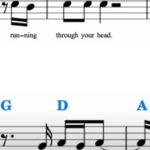The Terracotta Army, one of the most remarkable archaeological discoveries in the world, stands as a testament to the ancient Chinese civilization’s military prowess, craftsmanship, and artistic ingenuity. Located in the city of Xi’an in the Shaanxi province of China, this awe-inspiring collection of life-sized terracotta soldiers, horses, chariots, and weaponry has captivated the imagination of people worldwide since its accidental discovery in 1974. With each figure meticulously crafted and individually unique, the Terracotta Army offers a fascinating glimpse into the military strategies, technology, and societal structure of the Qin Dynasty, which ruled China over two millennia ago.
The Terracotta Army was created during the reign of China’s first emperor, Qin Shi Huang, who ascended the throne in 221 BC. Qin Shi Huang was determined to consolidate the various warring states of China into a unified empire, a feat he ultimately achieved through a combination of military conquests, infrastructure development, and the standardization of various aspects of Chinese society. To protect his newly unified empire in the afterlife, Qin Shi Huang ordered the construction of this astonishing funerary complex.
The army comprises an estimated 8,000 individual soldiers, each with distinct facial features, clothing, and hairstyles. Remarkably, these figures were created with remarkable attention to detail, reflecting the artisans’ unparalleled skill and dedication. The soldiers were made by pressing clay into molds, and then the artisans would painstakingly sculpt the finer details by hand, giving each warrior a unique appearance. This level of craftsmanship was highly unusual for its time and showcases the remarkable artistic talent of the Qin Dynasty.
The terracotta soldiers are organized into distinct pits, with the largest and most famous being Pit 1. This massive pit is thought to contain over 6,000 soldiers, horses, and chariots, arranged in a military formation reminiscent of Qin Dynasty battle tactics. The sheer scale of this pit is awe-inspiring, as it covers an area of 14,000 square meters and extends underground to a depth of around five meters.
Perhaps one of the most intriguing aspects of the Terracotta Army is the mystery surrounding its creation. The artisans who crafted these figures did so with a level of secrecy that has left modern archaeologists puzzled. It is believed that many of the craftsmen were likely buried alive with the soldiers to ensure that the emperor’s secrets were never revealed. This level of dedication and sacrifice adds an extra layer of intrigue and mystique to the site.
Beyond the soldiers themselves, the Terracotta Army also includes a variety of other figures, such as generals, archers, and charioteers, as well as an array of weapons, including bronze swords, spears, and crossbows. The inclusion of such a wide range of figures and weaponry provides valuable insights into the military technology and strategies of the time.
The significance of the Terracotta Army extends far beyond its artistic and historical value. It is not merely a testament to the grandeur of a single dynasty but a symbol of China’s rich and complex history, showcasing the nation’s ability to unite disparate regions under a single banner and its dedication to preserving its culture, even in the afterlife. The site has been designated a UNESCO World Heritage Site, further highlighting its global importance.
In recent years, extensive efforts have been made to preserve and study the Terracotta Army. Conservationists and archaeologists have worked diligently to protect the figures from environmental damage and to unravel the mysteries that still surround this remarkable site. Advanced imaging techniques, such as 3D scanning and digital reconstruction, have been employed to gain a deeper understanding of the individual soldiers and their craftsmanship.
Visiting the Terracotta Army today is an awe-inspiring experience that allows visitors to step back in time and appreciate the grandeur of ancient China. The site’s museum provides valuable context, showcasing artifacts and historical information related to the Qin Dynasty and the construction of the army.
The Terracotta Army is not just an archaeological treasure; it is a testament to the ingenuity, artistry, and military might of ancient China. Its discovery has enriched our understanding of history and continues to inspire awe and fascination. As we marvel at the rows of life-sized soldiers standing in silent vigil, we are reminded of the enduring legacy of the Qin Dynasty and the enduring power of human creativity.
This post has already been read 42 times!










